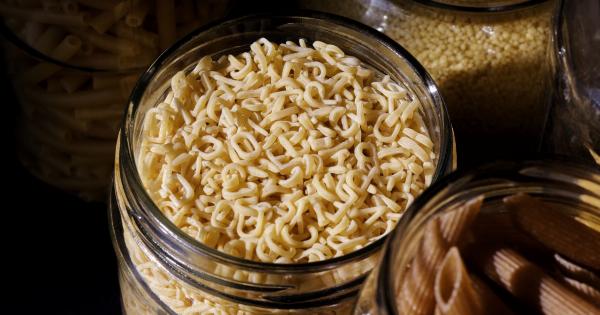Whole grain pasta has been a popular food item for many years now. It is an excellent source of complex carbohydrates, fiber, and essential nutrients, making it a healthy option for anyone looking to maintain a balanced diet.
While there is plenty of information available on the benefits of whole grain pasta, there are also many misconceptions about this food item that need to be cleared up. In this article, we will be separating fact from fiction when it comes to whole grain pasta.
Fact or Fiction: Whole Grain Pasta is Healthier than Regular Pasta
Fact. Whole grain pasta is made from whole grains, meaning that it contains the entire grain kernel, including the bran, germ, and endosperm.
This is in contrast to regular pasta, which is made from refined grains, meaning that the bran and germ have been removed. Whole grain pasta is therefore a healthier option because it contains more fiber, protein, and essential nutrients than regular pasta.
Fact or Fiction: Whole Grain Pasta is More Expensive than Regular Pasta
Fiction. While it is true that whole grain pasta may be slightly more expensive than regular pasta, the price difference is often negligible. In fact, many grocery stores now offer whole grain pasta at prices that are comparable to regular pasta.
Additionally, the health benefits of whole grain pasta make it a worthwhile investment, especially when compared to the many processed foods on the market that offer little in the way of nutritional value.
Fact or Fiction: Whole Grain Pasta is Gluten-Free
Fiction. Whole grain pasta contains gluten, which is a type of protein found in wheat, barley, and rye. While there are gluten-free pasta options available, whole grain pasta is not one of them.
Individuals with celiac disease or gluten sensitivity should opt for gluten-free pasta instead of whole grain pasta.
Fact or Fiction: Whole Grain Pasta is Lower in Calories than Regular Pasta
Fiction. Whole grain pasta and regular pasta have roughly the same number of calories per serving.
However, because whole grain pasta is higher in fiber and protein than regular pasta, it may be more filling and therefore help to keep you satisfied for longer periods of time. This can help to prevent overeating and may ultimately lead to weight loss.
Fact or Fiction: Whole Grain Pasta Tastes Bad
Fiction. While whole grain pasta may have a slightly nuttier taste than regular pasta, it is still a delicious and flavorful food item. Additionally, many brands offer a variety of whole grain pasta options, including spaghetti, penne, and linguine.
Finding a whole grain pasta that you enjoy is simply a matter of trying different brands and varieties until you find one that fits your tastes.
Fact or Fiction: Whole Grain Pasta Takes Longer to Cook than Regular Pasta
Fact. Whole grain pasta generally takes longer to cook than regular pasta. This is due to the higher fiber content in whole grain pasta, which makes it more dense and less absorbent than regular pasta.
However, the extra cooking time is worth it for the nutritional benefits of whole grain pasta.
Fact or Fiction: Whole Grain Pasta Can Help Lower Cholesterol
Fact. Whole grain pasta is an excellent source of fiber, which can help to lower cholesterol levels in the blood.
High cholesterol is a risk factor for heart disease, so incorporating whole grain pasta into your diet can be a simple yet effective way to improve your heart health.
Fact or Fiction: Whole Grain Pasta is a Good Source of Protein
Fact. While whole grain pasta is not as high in protein as animal products, it is still a good source of plant-based protein. One cup of cooked whole grain pasta contains around 8 grams of protein, making it a great option for vegetarians and vegans.
Fact or Fiction: Whole Grain Pasta is Not a Good Option for Diabetics
Fiction. Whole grain pasta is actually an excellent option for individuals with diabetes.
This is because the fiber and complex carbohydrates in whole grain pasta help to slow down the absorption of sugar into the bloodstream, which can help to prevent blood sugar spikes. Additionally, whole grain pasta is a more filling option than other types of pasta, which can also help with blood sugar control.
Conclusion
As you can see, there are many benefits to incorporating whole grain pasta into your diet. Not only is it a healthier option than regular pasta, but it is also a delicious and versatile food item that can be used in a variety of dishes.
By separating fact from fiction when it comes to whole grain pasta, we hope to have provided you with the information you need to make an informed decision about the foods you eat.



























